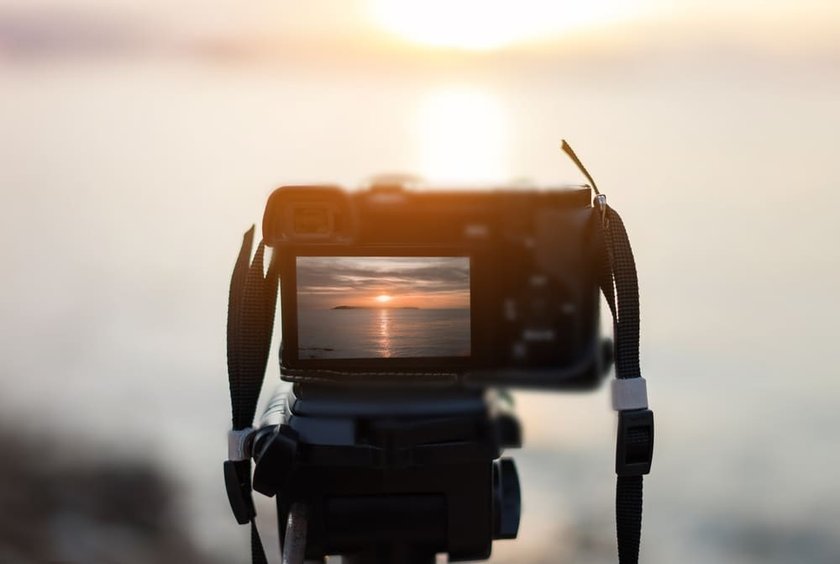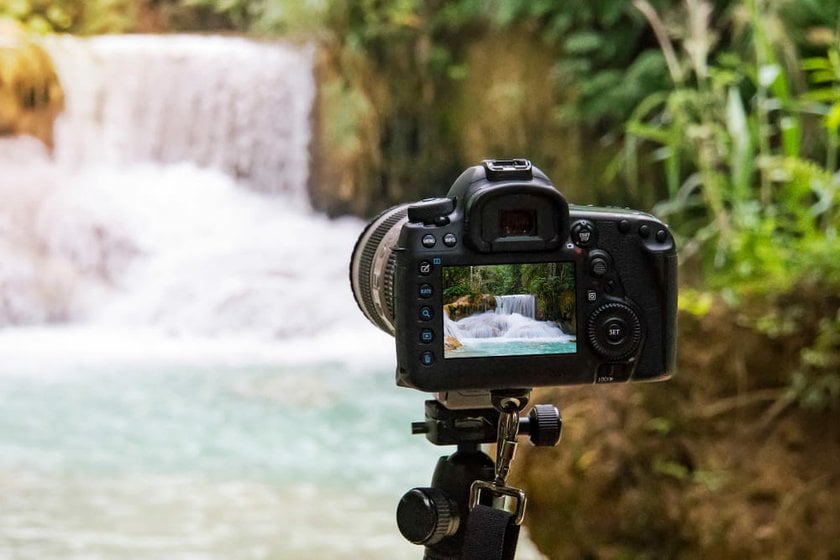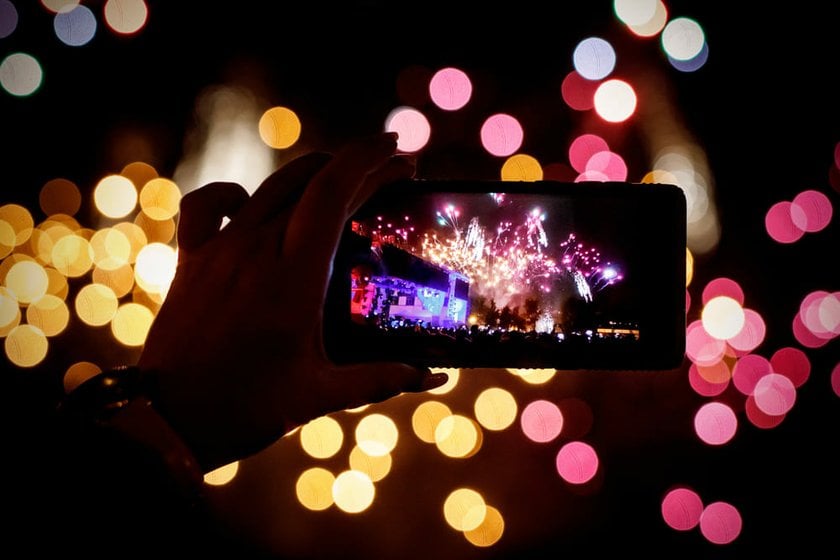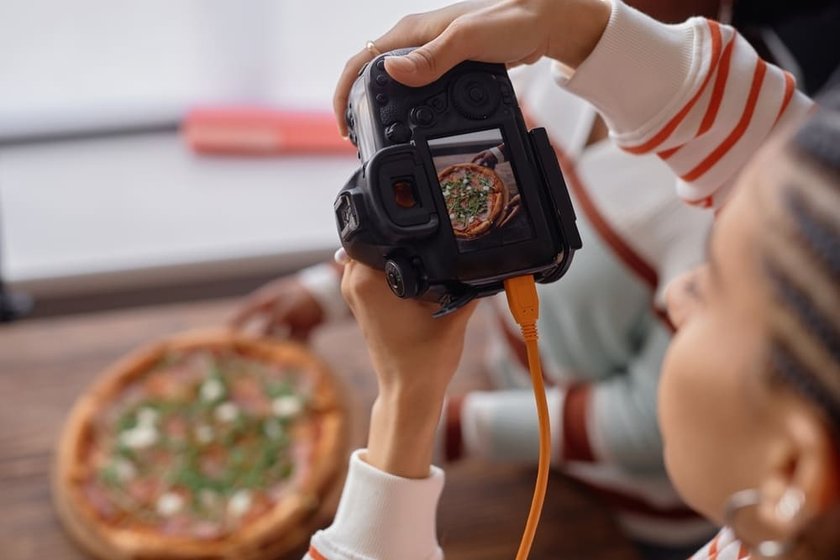The orientation of your photograph sets the tone of its perception by viewers. Depending on the impact you want your picture to have, it's important to know when each mode is used.
Today, we will answer the question, "What does landscape mode mean?" and briefly touch on the topic of portrait orientation so you can decide which one suits your shot best because you cannot always rely on your intuition.
So, let's begin our discussion on landscape orientation in photography!
What Is Landscape Mode?

The image aligns naturally with the horizon in landscape mode, often synonymous with horizontal orientation. Basically, it means the photo is wider than it is tall, and is designed specifically to capture the expansiveness of a natural scene. For example, think of your TV screen — that's a great example of landscape orientation!
This is ideal for — you guessed it — landscapes or outdoor scenes. It works better for these types of photographs because it typically gives the most balanced and naturally pleasing compositions. The layout will feel just right, with neither too much sky above nor too much ground below.
Ideal Moments for Landscape Orientation
Landscape Photos: Of course, the name tells itself - you should shoot landscapes! You can capture the greatness of waterfalls by capturing not only it but also a piece of sky, showing the real size of its beauty in a wide shot. Or consider taking pictures of sunsets in a field; in landscape format, the field seems endless, and that is what you are striving for! For cityscapes, it's perfect to capture its vastness. Experiment with different landscapes!

Nature Photos: Similar to landscape photos, you could convey the huge size of an ancient tree or the biggest mountain in the world with landscape mode. The breadth of landscape orientation can truly emphasize the grandeur of such subjects.

Group Photos: Definitely a choice for landscape mode, since when you photograph many people in portrait mode, a lot of sky or ground is left in the frame and it draws attention away from the main subjects. Landscape mode accommodates the width of groups without unnecessary distractions!

But if you notice distractions in the background and believe there’s a better option, try the image background remover in Luminar Neo. It uses AI to make the switch in just a few seconds!
Event Photography: Landscape mode is ideal for capturing all of the guests in different corners, the scale of the party, or the number of people who came to the event. It helps portray the full atmosphere and scope of events, from small gatherings to large celebrations.

How Is Portrait Mode Different?
In contrast, portrait photography typically uses a vertical orientation. This is ideal if you want to capture the full height of a subject, such as a person or a tall building, or to focus closely on a subject, like in a head-and-shoulders headshot. You can notice that smartphone displays are also made in portrait orientation, which says about its common use in everyday photography.
How to Choose Between Landscape and Portrait

While certain subjects naturally lend themselves to one orientation or the other — people and tall structures often suit portrait, while expansive scenes like mountain ranges fit landscape — both scenery and people can effectively be captured in either format. The choice between portrait and landscape should be influenced by your personal style, the intended use of the image, and the message you want to convey to your audience.
This versatility in orientation allows photographers to experiment and choose the best way to express their vision, whether it’s the grandeur of a landscape or the intricate details of a portrait!
But don't let the choice between portrait and landscape orientations restrict your creativity. Treat every photo shoot as a chance to explore different possibilities. Remember, you can also experiment with adjusting the orientation when you edit landscape photos, so if you change your mind about an image's layout, it's never too late to switch it up!
Next Steps After Choosing an Orientation
 So, you've chosen your orientation — what else do you need to consider? Well, the first thing is composition. Apply methods that you think will help, like the rule of thirds or leading lines. For these, imagine a grid or find objects that create guiding lines in your photo.
So, you've chosen your orientation — what else do you need to consider? Well, the first thing is composition. Apply methods that you think will help, like the rule of thirds or leading lines. For these, imagine a grid or find objects that create guiding lines in your photo.
Along with that, consider positioning your subject; you need to plan where to place them in the frame and decide on the best pose if you are shooting a person. Then, make the most of your camera's capabilities, including basic settings like ISO and aperture, because it is always more reliable to shoot in manual mode than to trust your camera to make a choice of settings for you.
After taking a photo, don't forget about post-shoot adjustments! We recommend Luminar Neo, an AI editor that delivers the best results without heavy lifting; you just choose the tool you need, from basic to advanced, and let the AI do all the work for you! This way, your shots will look their best!
Wrapping It Up
We've covered a lot about landscape mode meaning and how to pick between landscape and portrait orientations. Remember, the mode you choose plays a crucial role in how your photos convey your message.
We have more interesting posts for you, such as one on "dead pixel vs stuck pixel." We hope to provide more insights to help refine your photography skills, so it might be worth checking our photography blog!
So, experiment with different settings and subjects to see what works best for you, and use the orientation that tells your story in the best way possible!





